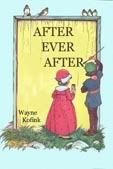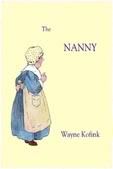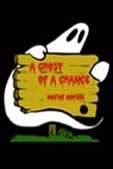HAPPY EVER AFTER
 I had the great pleasure of seeing the Sondheim-Lapine musical Into the Woods performed by a local high school last week. The performance was outstanding. Sondheim is tough to sing even for professionals, but these students did a very credible job. I happened to know the actresses who portrayed the Witch Next Door, Cinderella, and Cinderella's step-mother, so maybe I'm a little prejudiced, but I think they were great.
I had the great pleasure of seeing the Sondheim-Lapine musical Into the Woods performed by a local high school last week. The performance was outstanding. Sondheim is tough to sing even for professionals, but these students did a very credible job. I happened to know the actresses who portrayed the Witch Next Door, Cinderella, and Cinderella's step-mother, so maybe I'm a little prejudiced, but I think they were great."Into the Woods" has one of the most complex plots of any musical I know. It follows the fairytales of Cinderella, Jack and the Bean Stalk, Little Red Riding Hood, and Rapunzel, with an additional new fairytale of the Baker and his Wife to serve as a meta-narrative tying the whole thing together. And if that weren't enough, after all the fairytales receive a traditional happy ending in the first act, everything comes apart in the second act when the consequences of the character's actions bring disaster on the enchanted kingdom. Most of the characters are killed, run away, or just disappear. The four remaining characters are faced with the task of killing the Giant's wife. In the process they have to learn to work with each other and to form a sort of family with the Baker and Cinderella playing parents (after a sort) to Jack and Red Riding Hood.
It's obvious that author James Lapine was heavily influenced by Bruno Bettelheim's classical work The Uses of Enchantment: The Meaning and Importance of Fairy Tales. I read the book more than twenty-five years ago and was fascinated by Bettelheim's psychological insights to the fairy stories. the stories of these far-fetched characters in an enchanted world reflect the challenges of every child.
Consider the family life of each of the characters. The Baker's father (who is also Rapunzel's father) is believed to be dead, although he has only abandoned his children. His mother is dead. Jack's father is also gone. Neither the Witch nor Red Riding Hood seems to have a father, and Cinderella has been emotionally abandoned by a father who married a new wife after Cinderella's mother had died. The stepmother and stepsisters treat Cinderella as a servant. Rapunzel had been given to the Witch by her parents and is kept imprisoned in a lonely tower. The Witch herself had been cursed by her own mother. Jack's mother thinks her son is a dolt. So these wonderful fairytales are stories about completely dysfunctional families.
Then the sexual overtones are added. The most obvious ones are between the Wolf and Little Red Riding Hood. In some of the versions of the story Red actually climbs into bed with the Wolf. In the play the lecherous advances of the wolf are only lightly cloaked as his desire to consume Red. Her sexual awakening is couched in the words of the song "I Know Things Now:
But he seemed so nice.
And he showed me things
Many beautiful things
That I hadn't thought to explore.
. . . . . . . . . . . . . . . . .
Isn't it nice to know a lot!
And a little bit not.
Jack's sexual awaking is attached to the giantess:
A big tall terrible lady giant sweeping the floor
And she gives you food
And she gives you rest
And she draws you close
To her Giant breast,
And you know things now,
that you never knew before.
And on it goes. The Baker and his Wife are childless so the Wife plays a role more like the Baker's mother than his spouse and winds up having a brief affair with the Prince. The Witch's affection for Rapunzel seems to go far beyond a proper mother-daughter relationship. Poor Cinderella is caught up in romantic wishes unsure if she really wants the more fleshy reality of Prince who pursues her, weds her, and ultimately proves unfaithful to her.
Racy stuff underneath the children's stories. And yet there is a need for them
Bettelheim wrote: "Fairy tales intimate that a rewarding, good life is within one's reach despite adversity–but only if one does not shy away from the hazardous struggle without which one can never achieve true identity. . . . The stories also warn that those who are too timorous and narrow minded to risk themselves must settle down to a humdrum existence–if an even worse fate does not befall them."
This psychological interpretation certainly applies to the first act of Into the Woods. We watch the Baker, who is fearful of the woods take the necessary risks to overcome the Witch's curse, and all would seem to end happily ever after. So effective is this first act that I noted a number of people left at its conclusion assuming the play was over. The second act, however, takes us into a new direction when the consequences of the actions result in disaster, a giantess loosed in the kingdom. Who is responsible? The humorous song "So It's Your Fault" passes the blame around, reminiscent of the story of the Garden of Eden. The Man blames the Woman, and the Woman blames the Serpent. In the end it turns out that the second act is just the telling of a new fairy showing that people have to work together to achieve success. This allows one of the most moving songs in the work, "No One is Alone." However, while the message of cooperation is certainly an admirable one, it is presented in a somewhat heavy-handed fashion for a fairy tale. You can almost hear the voice over: and the moral of the story is . . .
For me, the most intriguing twist comes at the very end of the musical in which all the characters (living, dead, or missing) reappear, and reprise the chorus "Happy, Ever After." It comes to the joyous ending, and then Cinderella sings two words, "I wish," the same words she sang at the very beginning. Even when we have achieved happiness, there is still the longing for more, the unfulfilled wish, and the adventure starts again. That leads me to my observation about life as pilgrimage: it isn't reaching the destination that's most important, but going on the journey itself.
Did I learn things from "Into the Woods" as well as enjoying myself? Of course I did, but as Red Riding Hood observes: "Isn't it nice to know a lot! And a little bit not."
May the Lord God bless you on your way and greet you on your arrival.
Wayne
Labels: Bettelheim, fairytales, Into the Woods, Sondheim, Uses of Enchantment









